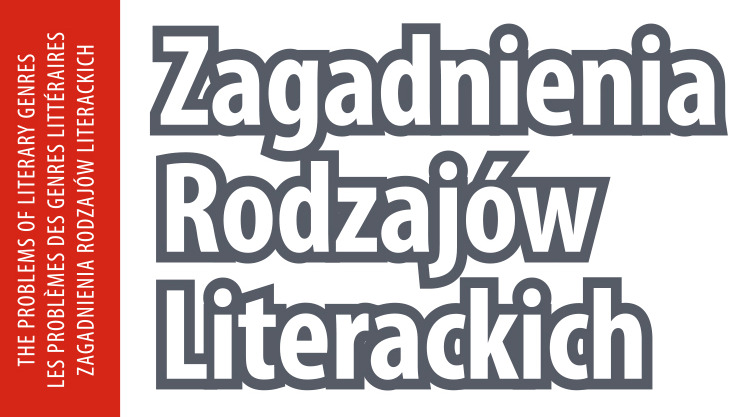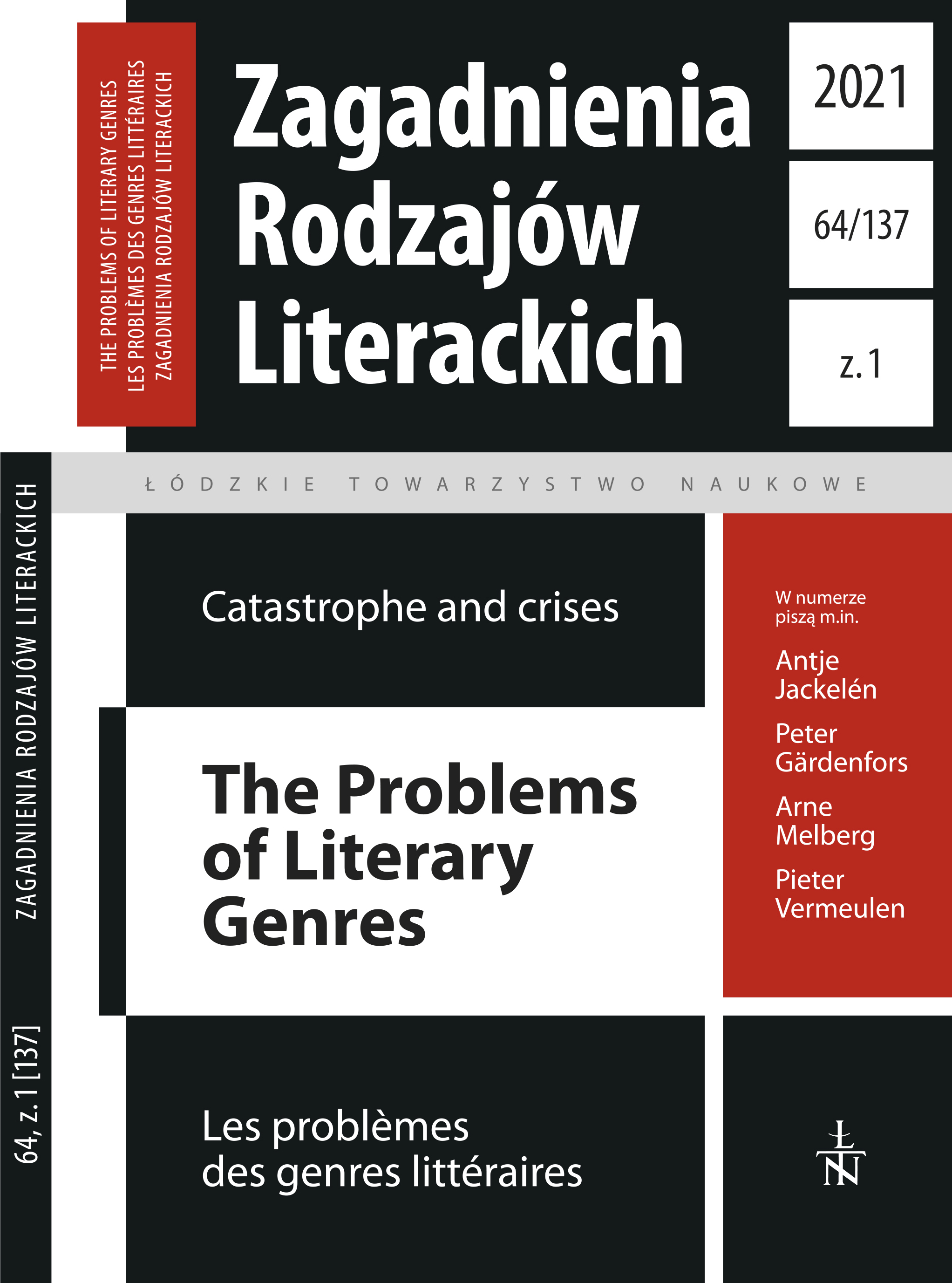Ikona, świadek, ofiara. Niedźwiedź polarny jako figura wizualna dyskursu zmiany klimatu
DOI:
https://doi.org/10.26485/ZRL/2021/64.1/5Słowa kluczowe:
polar bear; climate catastrophe; visual culture; embodiment; vulnerabilityAbstrakt
The article focuses on the media practice of using visual representations of polar bears to illustrate information about climate change. It starts with a short description about the iconic status that climate discourse attributes to these type of images. The article addresses the question about how this iconic status is defined and what the media specificity of the polar bear is as a part of “charismatic megafauna.” These iconic properties are placed in contexts related to communicating issues related to climate change, and as a consequence the article emphasises the subsequent disappointment that these kind of representations have brought about. To begin with the article focuses on a reconstruction of the images of polar bears that were created at a time when it became a species in danger of extinction. Subsequently, the article characterizes the representations of the species in relation to the effects of climate change. The analysis refers to the typology proposed by Dorothea Born, who suggested that three types of such representations are namely: “anthropomorphized bears,” “bear in context,” “bear in danger.” Finally, the focus turns to the victimising dimension of these representations. When seen from the perspective of the polar bear as a victim, there is a need to emphasize the role of the suffering body, which can be seen as a common denominator in the human-non-human condition of vulnerability.
Liczba pobrań
Bibliografia
Archibald Kristoffer (2015), From fierce to adorable: Representations of polar bears in the popular imagination, „American Review of Canadian Studies”, nr 45(3).
Berger John (2005), Po coż patrzeć na zwierzęta? [w:] Berger J., O patrzeniu, Fundacja Aletheia, Warszawa.
Born Dorothea (2019), Bearing Witness? Polar Bears as Icons for Climate Change Communication in National Geographic, „Environmental Communication”, nr 5(13).
Bousé Derek (2000), Wildlife Films, University of Pennsylvania Press, Filadelfia.
Breum Martin (2018), Arctic warming alert moves on from polar bear symbol, euobserver.com/environment/143140 [dostęp: 19.06.2021].
Butler Judith (2011), Ramy wojny. Kiedy życie godne jest opłakiwania?, przeł. A. Czarnacka, Instytut Wydawniczy Książka i Prasa, Warszawa.
Corner Adam, Webster Robin, Teriete Christian (2016), Climate Visuals. Seven principles for visual climate change communication (based on international social research), Climate Outreach, Oxford, climatevisuals.org/sites/default/files/2018-03/Climate-Visuals-Report-Seven-principles-for-visual-climate-change-communication.pdf [dostęp: 07.06.2021].
Dillon Brian (2011), Introduction: A Short History of Decay [w:] Ruins: Documents of Contemporary Art, red. Brian Dillon, Whitechapel Gallery, MIT Press, London, Cambridge.
Doyle Julie (2011), Harradine David, Manifesto for producing artwork on climate change, arts. brighton.ac.uk/projects/here-today-moving-images-of-climate-change/manifesto [dostęp: 10.03.2021].
Dunaway Finis (2006), Review: Reframing the Last Frontier: Subhankar Banerjee and the Visual Politics of the Arctic National Wildlife Refuge, „American Quarterly”, nr 1/58.
Dunaway Finis (2015), Seeing Green: The Use and Abuse of American Environmental Images, University of Chicago Press, Chicago.
Engelhard Michael (2017), Ice Bear: The Cultural History of an Arctic Icon, University of Washington Press, Seattle and London.
Gibbens Sarah (2017), Your Questions About Our Starving Polar Bear Video Answered, www.nationalgeographic.com/science/article/starving-polar-bear-video-climate-change-spd [dostęp: 19.06.2021].
Hansen Andreas, Machin David (2013), Researching visual environmental communication, „Environmental Communication”, nr 7(2).
Heise Ursula K. (2016), Imagining Extinction. The Cultural Meanings of Endangered Species, University of Chicago Press, Chicago–London.
Houser Heather (2014), Ecosickness in Contemporary U.S. Fiction: Environment and Affect, Columbia UP, New York.
Huggan Graham (2016), Never-ending stories, ending narratives: Polar bears, climate change populism, and the recent history of British nature documentary film [w:] Affect, space and animals, red. Nyman J., Schuurman N., Taylor and Francis, New York.
Lam Anita, Tegelberg Matthew (2020), #Sickbear: Photographing Polar Bears as Ideal Nonhuman Victims [w:] Criminal Anthroposcenes — Media and Crime in the Vanishing Arctic, red. Lam A., Tegelberg M., Palgrave Macmillan, London.
Ngai Sianne (2017), Cuteness, czyli rozczulająca słodycz, przeł. A. Warso, „Widok. Teorie i praktyki kultury wizualnej”, nr 19, www.pismowidok.org/pl/archiwum/2017/19-obrazy-dla-dzieci/cuteness-czyli-rozczulajaca-slodycz [dostęp: 10.03.2021].
O’Neill Saffron J., Hulme Mike (2009), An iconic approach for representing climate change, „Global Environmental Change”, nr 19(4).
Oreskes Naomi, Conway Erik M. (2018), Upadek cywilizacji zachodniej. Spojrzenie z przyszłości, przeł. E. Bińczyk, J. Gużyński, K. Tarkowski, Wydawnictwo Naukowe PWN, Warszawa.
Owen Megan A., Swaisgood Roland R. (2008), On thin ice: Climate change and the future of polar bears, „Biodiversity”, nr 9(3–4).
Rosing Norbert (2000), Bear Beginnings: New Life on the Ice, „National Geographic”, nr 12.
Sturgeon Noël (2010), Penguin family values: the nature of planetary environmental reproductive justice [w:] Queer Ecologies: Sex, Nature, Politics, Desire, red. Erickson B., Sandilands C., Indiana UP, Bloomington.
Tollmann Vera (2014), The Uncanny Polar Bear: Activists Visually Attack an Overly Emotionalized Image Clone [w:] Image Politics of Climate Change: Visualizations, Imaginations, Documentations, red. Schneider B., Nocke T., transcript, Bielefeld.
Tvinnereim Endre, Lagreid Ole Martin, Liu Xiaozi, Shaw Daigee, Borick Christopher, Lachapelle Erick (2020), Climate change risk perceptions and the problem of scale: evidence from cross-national survey experiments, „Environmental Politics”, nr 7/29.
van der Hel Sandra, Hellsten Iina, Steen Gerard (2018), Tipping Points and Climate Change: Metaphor Between Science and the Media, „Environmental Communication”, nr 5/12, s. 605–620.
Warburg Aby (2010), Durer a antyk w Italii [w:] Warburg A., Narodziny Wenus i inne szkice renesansowe, przeł. R. Kasperowicz, słowo/obraz terytoria, Gdańsk.







